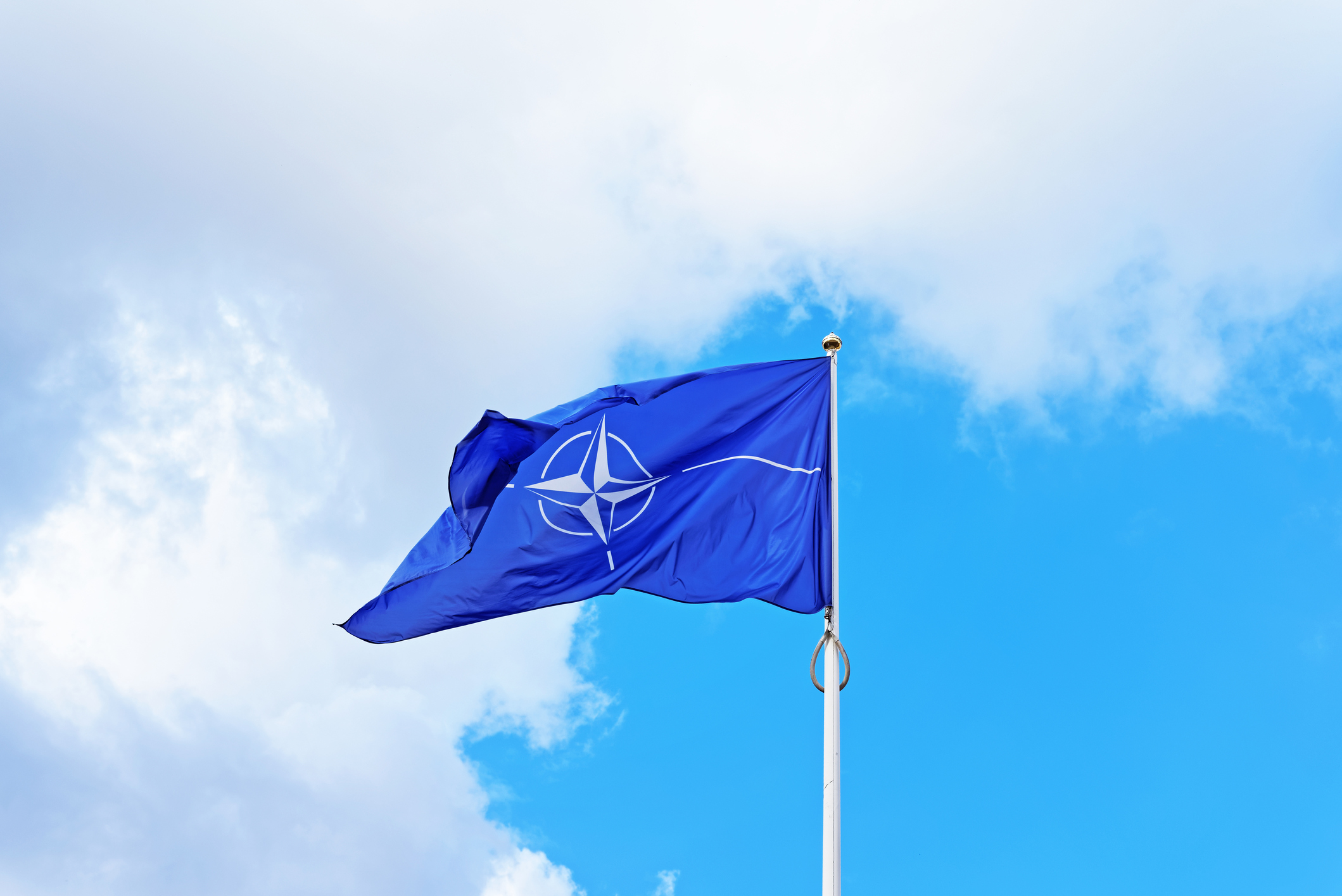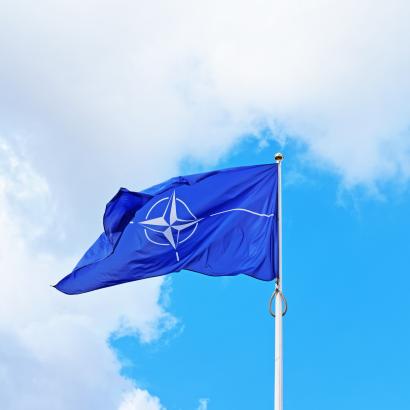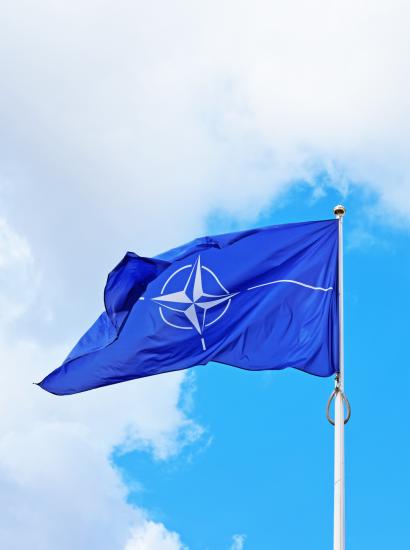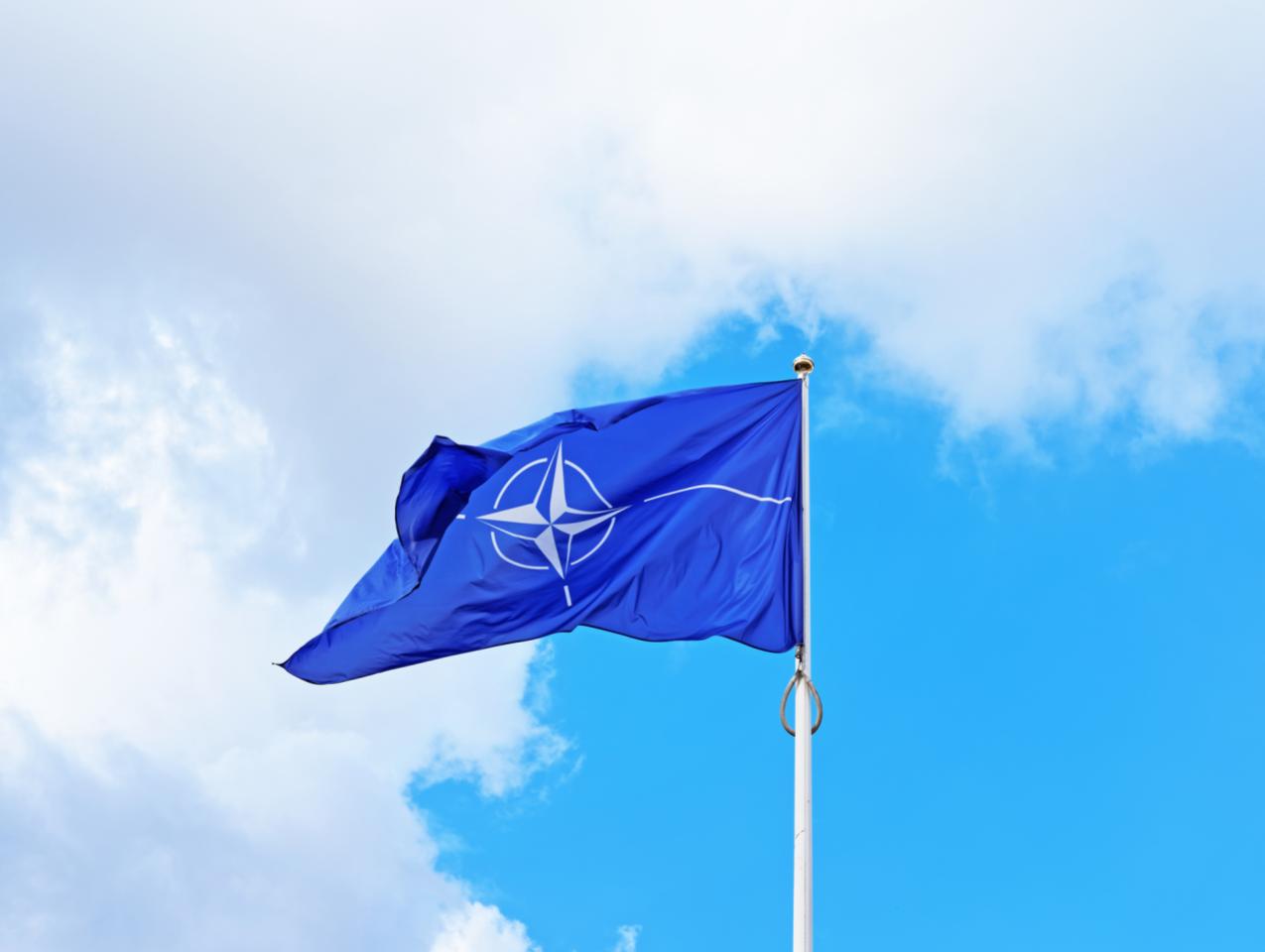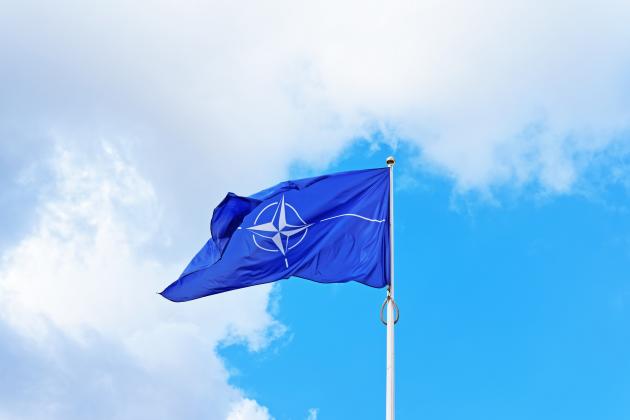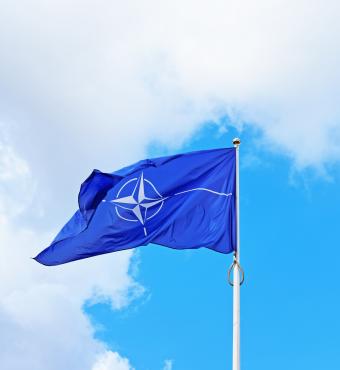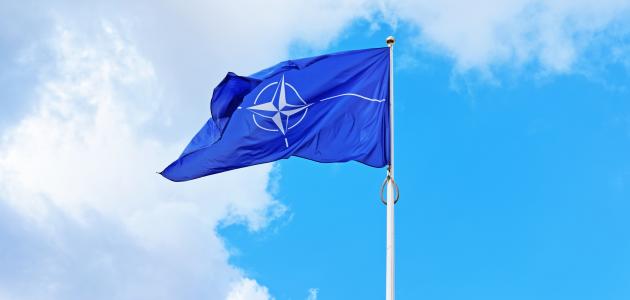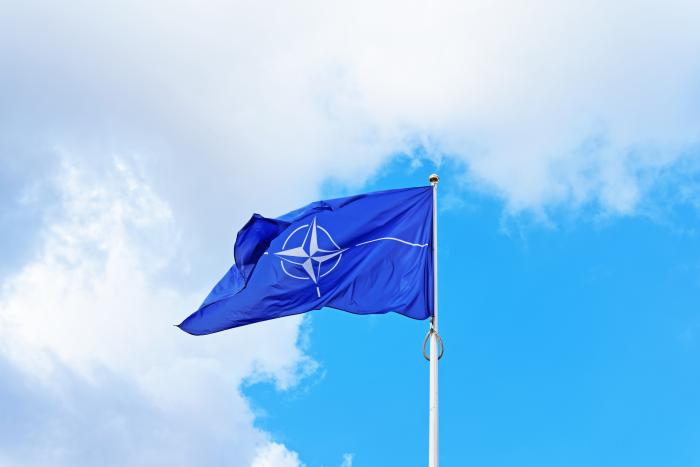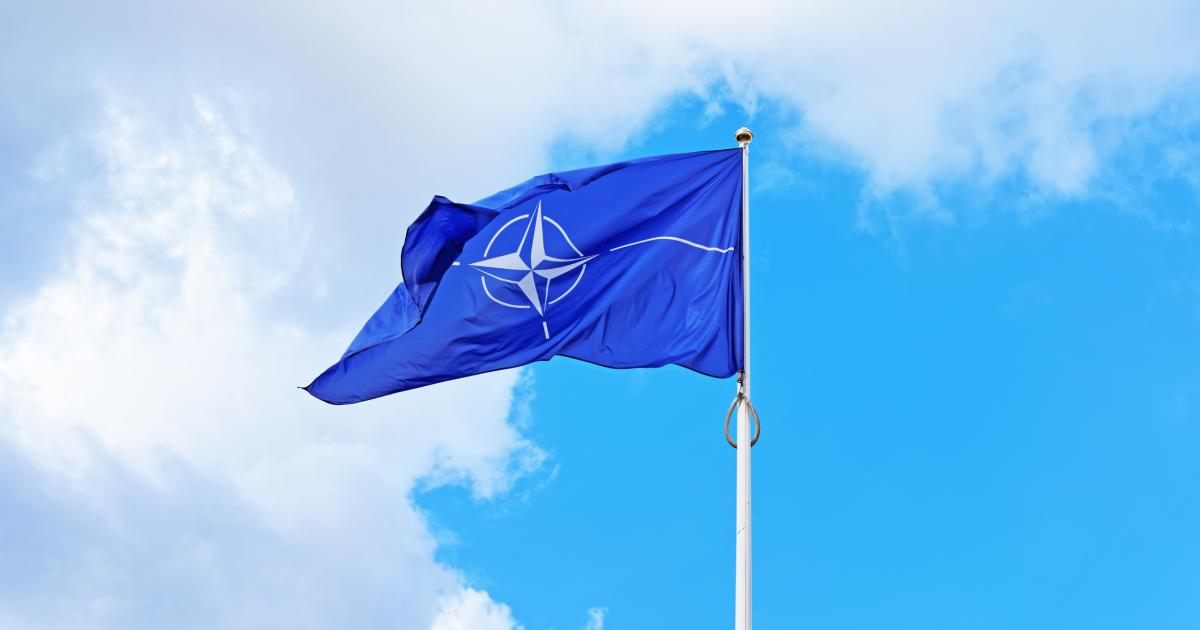- Security & Defense
Rose Gottemoeller, Steven C. Hazy Lecturer, Stanford University
As delivered in Washington DC, 19 April 2023
On the occasion of the NATO Annual WMD, Arms Control, Disarmament and Non-Proliferation Conference
Colleagues, it is so good to see everyone and a great honor to speak to this important group this evening. I wanted to start out with sincere thanks to the Delegations of Denmark and Germany for making this dinner possible, and to the James Martin Center for Nonproliferation Studies (CNS) for organizing it.
We owe a debt, of course, to ACDC/PASP at NATO HQ, and especially to Eirini Lemos-Maniati, a good friend and colleague, who brought the idea to you in the first place. And finally, I want to thank my good friends at the Hoover Institution, especially Victoria Guzman, Government Relations Program Manager at the Hoover Institution, who made it possible for us to use this beautiful facility right next to the White House.
I am hearing that the conference has been very meaty and productive, and I was so happy to read the speeches by SG Jens Stoltenberg and Deputy Secretary of State Wendy Sherman: they struck just the right note during this fraught period, I thought.
“Fraught period” is a mild expression for what we are going through with Russia, however. Not only has Russia launched a bloody, egregious and illegal invasion of Ukraine, but Russia itself is caught in a spiral of political repression and violence. Aleksei Navalny’s lawyer reported that he has been beat up in prison after a suspected poisoning. Eminent filmmaker and writer Vladimir Kara-Murza has been sentenced to 25 years in prison, his political activism amounting to “treason” in the bizarre Russian legal system. And of course, we are very worried about Wall Street Journal reporter Evan Gershkovich, who was seized and accused of espionage three weeks ago. The last time an American reporter was so detained was during the Soviet era, in the depths of the Cold War.
So we are seeing a country deep in the grip of repression, violence and fear. Unfortunately for all of us, including the Russians, nuclear weapons are a factor here. As Russian writer Sergei Lebedev said in an interview in the Financial Times last weekend, “We were asleep at the wheel when our president turned from a rational, practical autocrat into a maniac with a nuclear bomb.”
What to do in this unprecedented circumstance, so dangerous, so existential? Nothing is helped by the fact that Russia has shut down the main instrument of nuclear stability and predictability between us, the New START Treaty. It is so puzzling why Russia would want to lose visibility into the strategic nuclear force posture of the United States, just as the U.S. is launching into its major nuclear triad modernization. But the Kremlin is grasping at anything to lever the United States away from its support for Ukraine. It will not work, and Washington has made that clear.
So what now? As the two largest nuclear powers, we together have shouldered the responsibility of preventing nuclear Armageddon since the Cuban Missile Crisis, taking the lead together in negotiating the Nuclear Non-Proliferation Treaty and many other treaties and agreements. Now, Russia is behaving not as a responsible nuclear state, but as a very large pariah state with nuclear weapons.
In this situation, the United States must shoulder the responsibility alone, supported by its allies, partners and friends. In the first instance, the U.S. must look for every way possible to lower the nuclear temperature during this horrendous war in Ukraine. This is not easy. Beyond the nuclear saber rattling that has been a regular feature of Russian behavior, Russia is evidently bringing nuclear weapons to Belarus. I will have more to say on that score in a moment.
I think the most important current goal, as I’ve argued in my recent article in the Texas National Security Review, is maintain lines of communications with the Russians. The objective of such communications should be two-fold: to develop avenues to restore nuclear predictability and stability; and to convey tough deterrence messages. The nuclear negotiating table is by no means about being nice; sometimes it is the best, most direct and effective way to deliver a strong deterrence message.
OK, how to go about it in this difficult period? The Russians have said explicitly that New START mechanisms are closed now. If that is the case, then what other mechanisms might be available?
I have been interested to hear Russian Track 2 interlocutors speak about remaining agreements that provide mechanisms for consultation. They say that such venues provide opportunities for “other relevant issues” to be discussed.
Elena Chernenko, in a recent article in Kommersant,[1] catalogued five agreements that remain available for consultation:
- 1971 Accidents Measures Agreement;
- 1973 Prevention of Nuclear War Agreement;
- 1987 Nuclear Risk Reduction Centers Agreement;
- 1988 Ballistic Missile Launch Notification Agreement;
- And 1989 Reciprocal Advance Notification of Major Strategic Exercises Agreement.
While none of these instruments compensates for the illegal Russian suspension of the New START Treaty, which is a matter of grave concern in Washington and among the other P 5 members, I’d be interested to know if the Russian Federation has a proposal for regularizing U.S.-Russian consultations under these agreements, or some number of them.
Now, about nuclear weapons in Belarus: The deployment clearly contradicts the commitments that Belarus and Russia made under the Trilateral Statement of 1994, that all nuclear weapons in Belarus would be moved to Russia for redeployment or elimination, and that Belarus would embrace the status of a non-nuclear weapon state under the Non-Proliferation Treaty.
I know that Russia claims Belarus’ status under the NPT will not change, but the fact that a new nuclear storage facility is being built with great fanfare in Belarus, and that Belarusian pilots are being trained with great fanfare to fly nuclear-capable aircraft, runs against the spirit and the letter of that earlier agreement.
Of course, President Putin argues that he is doing no more than Washington has done with NATO for sixty years. However, I would like to emphasize that the nuclear sharing arrangements at NATO were front and center during negotiation of the NPT in the 1960s; the negotiating record of the treaty clearly shows that the USSR agreed to the arrangements at the time in order to assure that other NATO countries, such as Germany, did not acquire nuclear weapons of their own.
Putin’s decision takes a country, Belarus, that was clearly non-nuclear—a status that was even inscribed in its constitution—and provides it with new nuclear infrastructure and new nuclear knowledge. This is clearly a step backwards.
While the Russian action is regrettable, this would be a good opportunity to follow up on the recent proposal by Senator Sam Nunn and Dr. Ernie Moniz of the Nuclear Threat Initiative to have a US-Russian dialogue on fail-safe mechanisms. I think it would also be valuable for the rest of the P 5—UK, France and China—as well as other states possessing nuclear weapons, to join into the discussion.
The United States has set a good example. The new generation of US nonstrategic nuclear weapons in Europe—the B61-12 gravity bombs—have enhanced their protections against nuclear accidents or theft:
- The B61-12 contains an enhanced Permissive Action Link (PAL) system that precludes unlocking and arming of the weapon without a prescribed, discrete code available only after presidential authorization.
- Arming is accomplished through a coded control device that uses a cryptographic algorithm.
- The weapon may be “relocked” without a code for enhanced protection.
I deeply hope that Russia has taken similar measures with its own non-strategic nuclear weapons and I agree with Nunn and Moniz that it would be good for the United States and Russia, as well as other states with nuclear weapons, to discuss the matter.
Now, before I turn to your questions, I’d like to say a few words about conventional arms control in Europe. It was approaching a shambles even before the Russian aggression in Ukraine, because of Russia’s refusal to implement so many of its obligations under the conventional regimes.
When I heard about Russia’s suspension of the New START Treaty, it was déjà vu all over again, remembering its illegal suspension of the Conventional Forces in Europe Treaty (CFE) in 2007. Indeed, Moscow seems to be going by the same CFE playbook in its New START suspension. The Open Skies Treaty and Vienna Document were also weakened by Russian behavior.
And yet, the regimes still pay dividends for European security. Even with Russian absence from CFE, its implementation measures have continued to bolster mutual predictability and confidence in Europe. The countries of the South Caucasus are a good example. They have benefitted from CFE’s verification measures even as tensions simmer between them. The same goes for Open Skies and the confidence-building measures of the Vienna Document.
To ensure that these regimes continue to play a foundational role in conventional security in Europe, countries who remain within them should take care to protect them, committing to fully implement their requirements.
Looking to the future, however, we will have to rebuild on this foundation. Someday there will be victory in Ukraine and we will have to take a clear-eyed look at what measures will be most stabilizing in the Europe that emerges after this war. We will need to consider both older issues, such as massing of conventional forces and snap exercises; and newer issues such as heavy use of longer range missiles and drones.
One thing will be certain: we cannot simply return to the past and expect to rebuild the regimes just as they existed in the years following the Cold War. We must look to new ways to do things, through new technologies for monitoring and verification, through new approaches such as bringing more commercial capacity to bear, and through adding mutually supporting objectives.
Let me give you an example by telling you how I think about the future of the Open Skies Treaty. I do not see returning to the past with this regime. Instead, we should look for ways to bring more monitoring resources to bear, looking to commercial satellite imagery to bolster the first line of confidence-building under the regime. But in the end, as we all know, confidence-building comes best from inspectors being able to work together on the observation flights—that must be a necessary part of any new regime. Here too, however, it makes sense to look to commercial aircraft leasing rather than depending solely on state-supported platforms. Finally, the utility of the regime as well as its confidence-building aspects could be strengthened by adding additional objectives and additional partners—climate monitoring, for example, and environmental sampling.[2]
The bottom line is, as we look to the future of what we need for conventional arms control in Europe, let’s really think hard about how to derive the greatest utility as well as maximum mutual confidence and predictability from the regimes.
I mention mutual confidence and predictability because Russia will have to be part of the calculus. It is impossible to think about today, as the Kremlin perpetrates its bloody war against Ukraine. However, as Ukraine emerges victorious, where will that leave Russia? And how best to ensure that it does not rebuild, regroup and strike again in the misbegotten belief that Europe is threatening its borders? Somehow, when the day of Ukraine’s victory comes, we will have to think about how to engage Russia. In that regard, NATO will have to consider again its long-standing approach, first laid out by Pierre Harmel in 1967—defense and dialogue. Impossible today, but will the dual-track approach determine NATO policy in future? That is a question only you, the NATO member states, can decide.
Thank you very much, colleagues, for your attention, and I look forward to your comments and questions.
[1] https://www.kommersant.ru/doc/5925040.
[2] https://thebulletin.org/2021/06/reimagining-the-open-skies-treaty-cooperative-aerial-monitoring/







